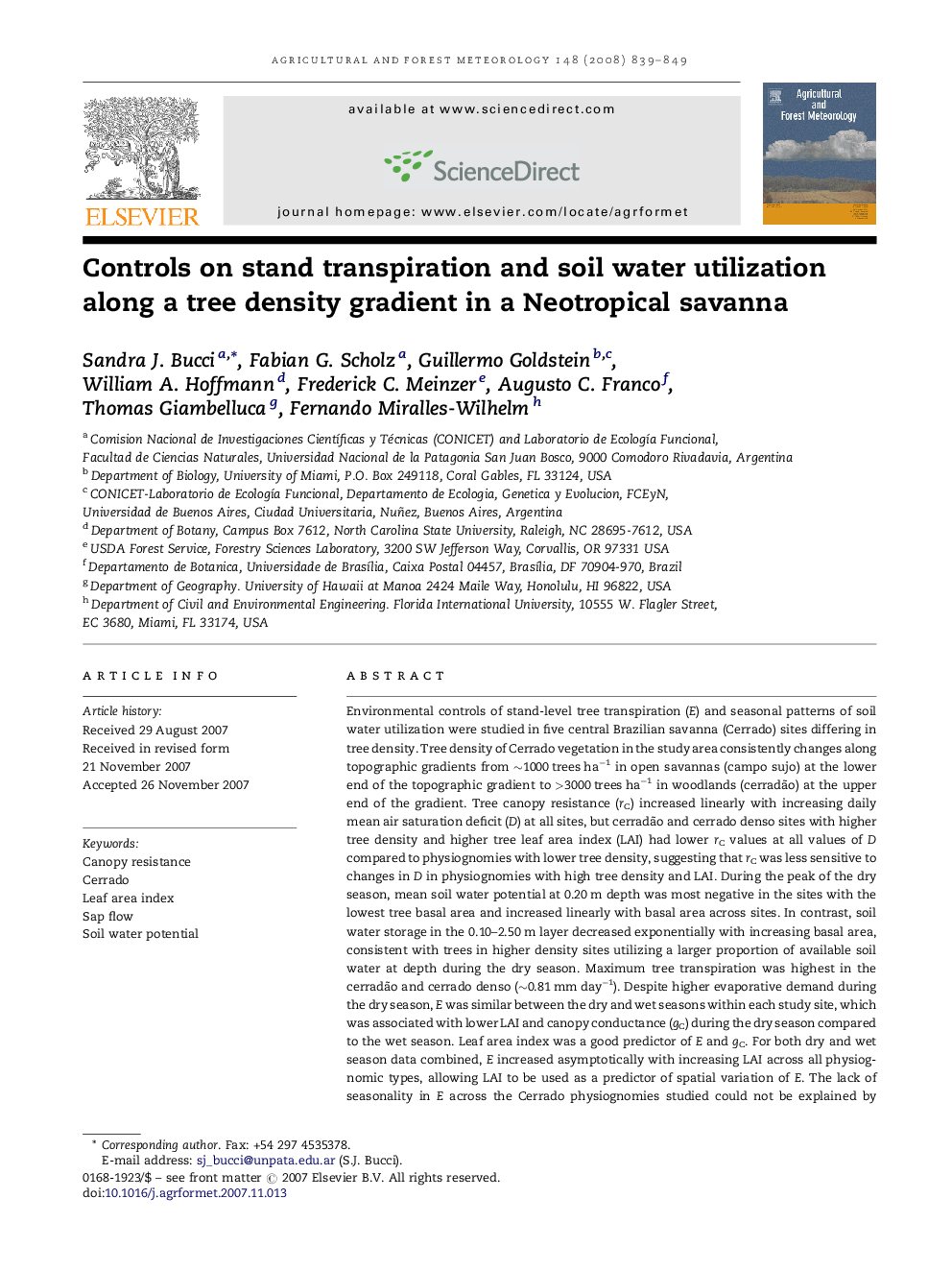| Article ID | Journal | Published Year | Pages | File Type |
|---|---|---|---|---|
| 82775 | Agricultural and Forest Meteorology | 2008 | 11 Pages |
Environmental controls of stand-level tree transpiration (E) and seasonal patterns of soil water utilization were studied in five central Brazilian savanna (Cerrado) sites differing in tree density. Tree density of Cerrado vegetation in the study area consistently changes along topographic gradients from ∼1000 trees ha−1 in open savannas (campo sujo) at the lower end of the topographic gradient to >3000 trees ha−1 in woodlands (cerradão) at the upper end of the gradient. Tree canopy resistance (rC) increased linearly with increasing daily mean air saturation deficit (D) at all sites, but cerradão and cerrado denso sites with higher tree density and higher tree leaf area index (LAI) had lower rC values at all values of D compared to physiognomies with lower tree density, suggesting that rC was less sensitive to changes in D in physiognomies with high tree density and LAI. During the peak of the dry season, mean soil water potential at 0.20 m depth was most negative in the sites with the lowest tree basal area and increased linearly with basal area across sites. In contrast, soil water storage in the 0.10–2.50 m layer decreased exponentially with increasing basal area, consistent with trees in higher density sites utilizing a larger proportion of available soil water at depth during the dry season. Maximum tree transpiration was highest in the cerradão and cerrado denso (∼0.81 mm day−1). Despite higher evaporative demand during the dry season, E was similar between the dry and wet seasons within each study site, which was associated with lower LAI and canopy conductance (gC) during the dry season compared to the wet season. Leaf area index was a good predictor of E and gC. For both dry and wet season data combined, E increased asymptotically with increasing LAI across all physiognomic types, allowing LAI to be used as a predictor of spatial variation of E. The lack of seasonality in E across the Cerrado physiognomies studied could not be explained by individual constraining variables such as D or soil water potential near the surface, but was consistent with the influence of multiple regulatory effects of D and soil water potential on seasonal changes in leaf area and gC.
